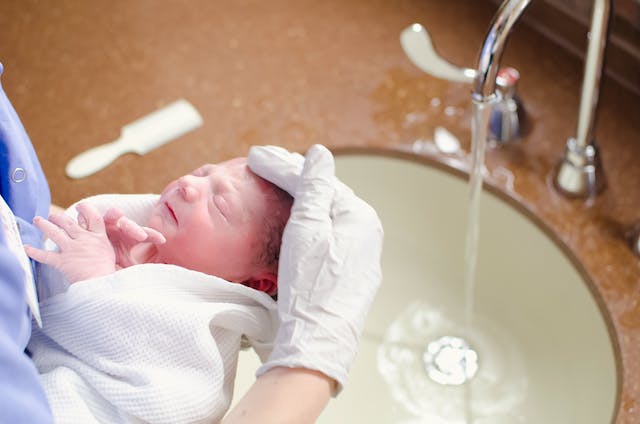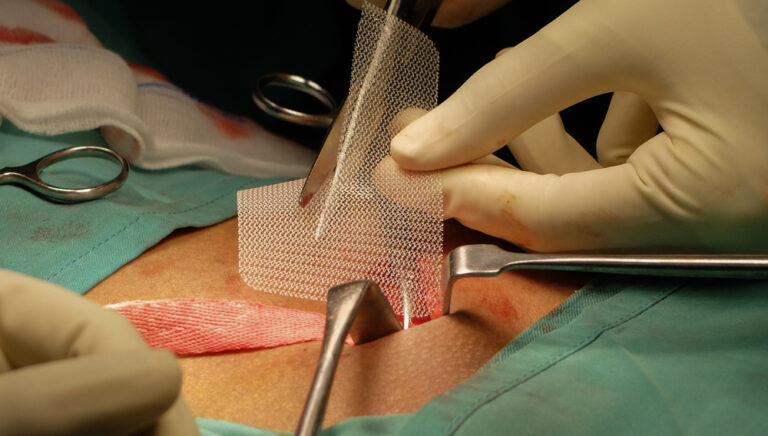Caput succedaneum vs Cephalohematoma, both are conditions related to head injuries during childbirth. Even though those head injuries are non-threatening conditions, you still should be aware of those birth injuries. Furthermore, there are differences between those two.
Find further information regarding the birth injuries mentioned by reading the explanation below!
Caput Succedaneum vs Cephalohematoma: What are They?
Newborns are prone to injuries since their body is still fragile. Even during labor, the baby’s head easily gets injured. Caput succedaneum and Cephalohematoma are some of the common head traumas that may happen during the baby’s delivery.
You can recognize the symptoms from the lump that appears on the baby’s scalp. These injuries generally happen due to the pressure following delivery or the usage of forceful delivery-assertive devices.
In most cases, these injuries are not life-threatening. However, there are still some risks and complications. Besides, some symptoms might need proper treatment immediately. Otherwise, it may lead to a worse disease.
Overview of Caput Succedaneum
Caput succedaneum is edema or swelling containing serosanguinous fluid in a newborn’s scalp. This condition occurs due to prolonged pressure of the baby’s head to the pelvic wall during labor. Moreover, this condition can also happen because of delivery-assertive devices, like forceps and vacuum extraction.
What Causes Caput Succedaneum?
The lump of Caput Succedaneum contains serosanguinous fluid that is typically transparent or yellowish with a small amount of blood. In this injury, the fluid accumulates between the baby’s scalp and the protective membranes in the skull, the periosteum. Several factors below contribute to this occurrence for the newborn.
a. Labor
Vaginal delivery is the common cause of Caput Succedaneum. The occurrence during delivery, like the mother and baby’s condition or medical treatments, could affect the newborn’s condition. The factors that cause Caput Succedaneum during labor include:
- prolonged delivery,
- larger-than-average baby (fetal macrosomia), and
- delivery using forceps and vacuum extraction.
b. Lack of Amniotic Fluid
The amniotic sac is essential to protect the baby during delivery. The baby is more likely to swell if the water breaks before labor.
In other cases, the amniotic sac doesn’t contain enough fluid. Consequently, the baby within the sac can get injured by hitting their mother’s pelvic bones. This condition will cause a caput succedaneum to the baby before delivery.
3 Potential Complications of Caput Succedaneum
Caput Succedaneum is typically harmless and can recover in a few days. However, this condition also follows some symptoms and possible complications. The possible symptoms may include these conditions as explained below.
a. Puffiness
Most puffiness or scalp swelling cases in babies aren’t life-threatening. The swelling in the baby’s head has some traits. For example, it has a slightly pointed shape head and leaves a small dent when you press on it.
b. Hair Loss
The condition of Caput Succedaneum also makes the baby suffer temporary hair loss around the swelling area.
c. Jaundice
Caput succedaneum can raise the level of the orange-yellow pigment—bilirubin. As a result of exceeding this pigment, the baby’s skin or eye turns into a yellow tint. This symptom is called Jaundice.
Usually, the condition can improve without additional treatment. However, you may talk to your doctor for further treatment.
What is Cephalohematoma?
Since we’re talking about Caput succedaneum vs Cephalohematoma, you also need to know about Cephalohematoma. This birth injury is similar to Caput succedaneum. However, instead of serosanguinous fluid, the swelling scalp in Cephalohematoma contains blood.
3 Frequent Causes of Cephalohematoma
Cephalohematoma also occurs during delivery. Excessive pressure during labor ruptures blood vessels. Then, the blood accumulates between the skull and the periosteum and creates a lump in the baby’s scalp. This injury has similar risk factors to Caput Succedaneum, which also involves the conditions below.
a. The Infant’s and Mother’s Pelvis Size
Fetal macrosomia refers to the infant having a larger body than the average infant. A baby who weighs more than 8 pounds is most likely having difficulty during labor. Thus, the infant might get injured because of the pressure during delivery.
On the contrary, a mother who has a smaller pelvis than usual is likely to experience difficulty during labor even though the infant is an average size.
b. Assisted-Delivery Devices
Sometimes, the delivery takes more time than usual. To ease this prolonged labor, the doctor uses forceps or vacuums. These devices allow the doctor to grip the baby’s head and move it out.
However, the force of the tools may cause injury to the baby’s scalp and rupture the blood vessels. As a result, Cephalohematoma occurs in the newborn’s scalp.
c. Malpractice
Sometimes, the injury can occur due to the negligence act of the medical staff. Failure to recognize the symptoms, giving the wrong treatment, or misusing the assistive tool can qualify as malpractice.
If you experience this malpractice during labor, consult this problem with a professional lawyer to fight for your rights.
What Are the Potential Complications of Cephalohematoma?
Similar to Caput succedaneum, Cephalohematoma is also not dangerous. However, you need to consider at least three symptoms and potential complications of this condition.
a. Anemia
Since Cephalohematoma relates to bleeding, there is the possibility that the baby is short of red blood cells. In some cases, the baby may need a blood transfusion. Thus, you may check whether your baby experiences issues, such as:
- abnormal fast heartbeat,
- an unhealthy skin tone, and
- breathing trouble.
b. Jaundice
Cephalohematoma can also cause jaundice due to the increased level of bilirubin. Consequently, the baby will develop yellow skin or eyes. This condition may need medical treatment right away before getting worse.
c. Bone Fracture
A skull fracture is also a common symptom of Cephalohematoma. Typically, this symptom is not dangerous and can heal without any treatment.
Caput Succedaneum vs Cephalohematoma: Are They Different?
Now you already know about Caput succedaneum and Cephalohematoma. However, there are some differences between these birth injuries you should know. Check out the table below to understand the differences between these birth injuries.
| Caput succedaneum | Cephalohematoma |
| The swelling scalp contains serosanguinous fluid, which is transparent or yellow. | The lump contains blood. |
| Recover in a few days. | Recover in weeks or months. |
| The lump size decreases gradually. | The swelling scalp may grow for days before decreasing. |
| Do not have a relation with a skull fracture. | This condition may involve a skull fracture. |
| The injury does cross the occipital bone’s midline of the baby. | It does not cut across the suture lines of the skull. |
Caput Succedaneum vs Cephalohematoma: The Treatment
As already mentioned earlier, both Caput Succedaneum and Cephalohematoma are basically harmless injuries. Those injuries would gradually subside in a few days without any additional treatment.
However, the complications might occur due to various factors. For example, Cephalohematoma is a slightly worse condition than Caput Succedaneum since it involves bleeding and ruptured blood vessels. That’s why extra treatment would be necessary to prevent further complications.
Can You Sue for These Birth Injuries?
Suppose you find your baby’s birth injury is due to the negligence act of the medical staff. Then, you deserve to get a fair compensation. In this case, the doctor or medical staff that were on duty is liable for the malpractice of birth injury.
However, you will need convincing evidence that displays the malpractice act. Thus, you should consult with a professional birth injury lawyer regarding this matter. They will assist you, as their client, in inspecting the malpractice act. Furthermore, they will endeavor to resolve the best settlement for your case.
Which one is the most dangerous Caput succedaneum vs Cephalohematoma?
The most significant difference between Caput succedaneum vs Cephalohematoma is the fluid that exists in the injuries. Although these injuries are common and not dangerous, the complication of cephalohematoma presents a slightly more health threat to your baby due to the blood vessel rupture.
Although, generally both are harmless, you should still be aware of treatment for your baby. If the injuries occur, you may check if the medical staff follows the prompt medical protocol to treat your baby. Or, is there any malpractice occurring during labor?
You can ask for advice from a professional lawyer about your concerns regarding this issue. With their knowledge, they could give you the best suggestion to win your case.



